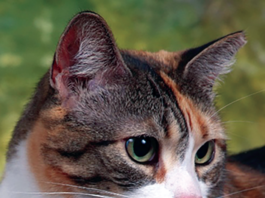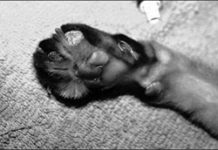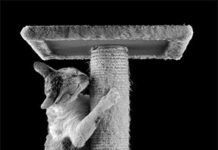Coming to Terms With Kidney Disease
Chronic kidney disease, a progressive condition that worsens at varying rates, affects an estimated 35 percent of cats over the age of 13. Although it has no cure, CKD is the subject of considerable research in the veterinary community.
Saving Diseased and Damaged Teeth
Root canal treatment for cats might sound far-fetched, but they’re performed at university hospitals and specialty practices around the country to save damaged and diseased teeth that might otherwise be extracted. In fact, newly available techniques and equipment in veterinary medicine have advanced the field of endodontics — the study and treatment of dental pulp — to the point where root canal treatment success rates in pets equal those in humans.
Why Haircoats Can Change Color
If your cat’s coat changes color, don’t become alarmed. In many cases, it’s could be a normal development. The hair of some cats, particularly those who are dark, turns gray as they age. Siamese kittens begin life with light-colored coats, without the characteristic dark “points” they will develop later on the nose, ears, tail and paws.
How Anatomy Shapes Their Sight
If you suspect your cat sees the world differently, you may be right. The complex anatomy of a cat’s eye results in less focused vision than ours, and he likely sees only a limited range of colors. On the other hand, these historically nocturnal predators boast superior night vision and skill in detecting motion, making their vision all the better for hunting.
Hack! Stand Back! It’s a Hairball
You know the sound. It’s as if your cat is coughing so hard he’ll turn himself inside out. Then out pops an object that has been revered in folk medicine, recounted by comedians and reviled by cat owners everywhere: a hairball.
Pursuing a Nutritional Treatment
Today’s treatments of choice for hyperthyroidism are often quick and effective, but can also have their downsides. Radioiodine therapy — a safe injection of radioactive iodine — has cure rates as high as 98 percent with one treatment.
Lupus: ‘The Great Pretender’
Imagine this scenario: Unsightly inflamed and crusting skin start to appear on a cat's face, the tips of his ears and pressure points such as toes, elbows and footpads. His fever persists despite antibiotics. His legs are stiff, and urination has increased. What could the diagnosis be?
Hack! Stand Back! Its a Hairball
You know the sound. It’s as if your cat is coughing so hard he’ll turn himself inside out. Then out pops an object that has been revered in folk medicine, recounted by comedians and reviled by cat owners everywhere: a hairball.
Lupus: The Great Pretender
Imagine this scenario: Unsightly inflamed and crusting skin start to appear on a cat's face, the tips of his ears and pressure points such as toes, elbows and footpads. His fever persists despite antibiotics. His legs are stiff, and urination has increased. What could the diagnosis be?
Appealing to the Heart of a Hunter
Does your cat lie around and sleep all day? It’s true that cats sleep up to 18 hours a day, but it’s not natural or normal for them to be completely inactive. Cats are hunters at heart. To be at their best, they need opportunities to stalk, spy, chase, climb and pounce.
Vaccination Guidelines Stress Individual Risks
Updated guidelines from the American Association of Feline Practitioners recommend a vaccination schedule based on individual cats’ needs. They say assessments should include discussions of risks and benefits, health, lifestyle and the likelihood of exposure to disease.
The Many Reasons They Love to Scratch
Scratching is a normal yet complex behavior in cats that can damage both the house and the cat-owner bond. Understanding the basis of destructive scratching is the first step in preventing it.














